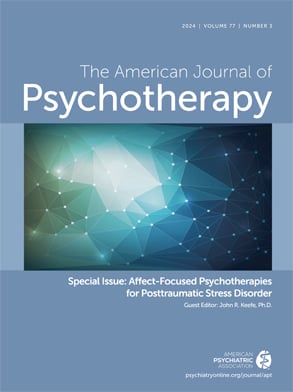Judith Herman: Trauma and Recovery: The Aftermath of Violence—From Domestic Abuse to Political Terror. New York: Basic Books, 2015, 326 pp., $17.99, ISBN 978-0-465-06171-6.
The second edition of Judith Herman’s groundbreaking work, Trauma and Recovery: The Aftermath of Violence—From Domestic Abuse to Political Terror, was released in 2015, 23 years after its explosive initial publication in 1992. One of the most influential books of it’s time, the work has held up well against the past 23 years of research and clinical observation in the field of psychological trauma.
Dr Herman is Professor of Clinical Psychiatry at Harvard Medical School and the Director of Training at the Victims of Violence program at the Cambridge Health Alliance. She is the recipient of numerous awards, including a Guggenheim fellowship, and is a distinguished fellow of the American Psychiatric Association.
Trauma and Recovery is told in two distinct parts, “Traumatic Disorders” and “Stages of Recovery,” followed by an extensive epilogue to the 2015 edition. Hermans organizing concept is that the study of psychological trauma is an inherently political enterprise based on the fact that it calls attention to the oppressed and powerless people in society.
In Part One, “The Forgotten History of Trauma,” three epochs of psychological trauma in the 20th century and their respective political movements are described: the Age of Hysteria and its links to the anticlerical political movement in France; Combat Neuroses and the antiwar movements, which culminated in the Vietnam War era, and sexual and domestic violence and its connection the feminist movements in Western Europe and the United States. Herman’s brilliantly argued point is that insights gained in these epochs are repeatedly rediscovered then forgotten. Only when the universality and commonality of this affliction is recognized will a transcendence of the specific worlds of war and the domestic sphere be achieved.
In the second section, “Stages of Recovery”, the point is repeatedly made that the therapist, while maintaining technical neutrality, must relinquish therapeutic neutrality in favor of “moral solidarity with the survivor” (p. 178). Dr Herman guides the practitioner through the stages of treatment, repeatedly emphasizing and expanding upon the point that “psychotherapy does not get rid of the trauma. The goal of recounting the story is integration” (p 181) followed by transformation of the traumatic memories and reconnection. Throughout the text, practical techniques for conducting the psychotherapy are detailed and illustrated with rich clinical case material. The utility and effectiveness of group exploration of trauma for patients in later stages of recovery is also reviewed in excellent detail in the section on “Commonality.”
The new epilogue of Trauma and Recovery, Herman brings forth the psychiatric casualties of a new generation: post–911 combat soldiers, women in the military and on college campuses who have been victims of sexual abuse and rape, and the childhood victims of sexual abuse by members of the Catholic priesthood. The expanded concept of trauma and the science on the effect of adverse childhood events and trauma on the brain, especially in childhood, are extensively reviewed. Herman describes in detail the impact this new scientific evidence has had on the DSM-5 and ICD-11: traumatic disorders are now recognized as a category unto themselves rather than anxiety disorders as previously understood. The review of early intervention treatment approaches in children with complex trauma is another excellent addition to the text.
Drawing on years of clinical experience, a rich compendium of first person accounts, and the extensive literature in the field of trauma, Herman uses her artful and evocative gift for language to illuminate the experiences of individual patients. It is, however, her vast mastery of the history of trauma and her ability to put it in a cultural and political frame that confers on the work it’s unique power.
The dialectical nature of the work, as it moves between large historical/theoretical views and the experiences of the patients she presents, lends Trauma and Recovery its immense power.

